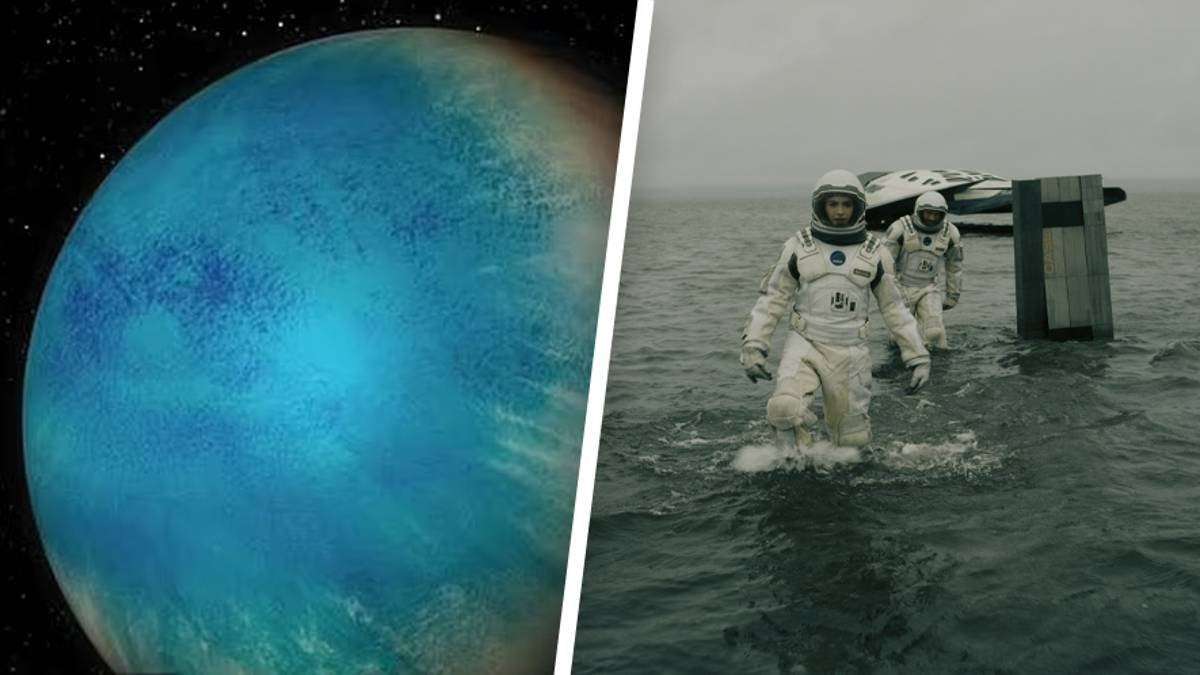NASA has discovered a water planet 100 million light years away from Earth that completes an orbit of its star every 11 days.
A group of astronomers at the Université de Montréal came across the ocean planet through NASAâs Transiting Exoplanet Survey Satellite or TESS, according to a study published in The Astronomical Journal.
CNET reports that the planet covered by a blanket of water, named TOI-1452 b by scientists, is thought to live 100 million light years from Earth and orbits within a binary star system among the Draco constellation.
Credit: Alexandr Yurtchenko / Alamy Stock Photo
Université de Montréal Professor René Doyon said in a press release: âIâm extremely proud of this discovery because it shows the high calibre of our researchers and instrumentation.
âIt is thanks to the OMM, a special instrument designed in our labs called SPIRou and an innovative analytic method developed by our research team that we were able to detect this one-of-a-kind exoplanet.â
While more research still needs to be conducted, itâs believed that the newly-discovered planet is 70 per cent larger than Earth, and its density could be consistent with having a deep ocean.
Lead author of the study Charles Cadieux shared: "TOI-1452 b is one of the best candidates for an ocean planet that we have found to date.
Credit: Stocktrek Images, Inc. / Alamy Stock Photo
"Its radius and mass suggest a much lower density than what one would expect for a planet that is basically made up of metal and rock, like Earth."
It sounds like something right now in Christopher Nolanâs Interstellar; when astronauts visit Millerâs planet, which is covered by a seemingly endless shallow ocean. Honestly, just set up some floating cafes and a shopping district and we can call it home,
But astonishingly, the planet is reported to sit close enough to its star, accumulating a mild temperature that could potentially support life.
However, the kind of life and how long it could thrive is still something researchers are trying to figure out.
Professor Doyon revealed that the exoplanet needed to undergo further observation with NASA's James Webb Space Telescope, the largest optical telescope in space known for its high infrared resolution, capturing shoots deep into the universe.
âOur observations with the Webb Telescope will be essential to better understanding TOI-1452 b,â she said.

divineaffirmation on August 27th, 2022 at 13:47 UTC »
Pretty sure Gojira wrote a song about something like this
Busy-Ad6502 on August 27th, 2022 at 13:27 UTC »
The planet is 100 light years away, not 100 million light years away which is what is stated in the article.
KerPop42 on August 27th, 2022 at 12:50 UTC »
The planet is TOI-1452b and it's not just an ocean world, it's a thalassaphobia world.
NASA's page on it is fantastic: https://exoplanets.nasa.gov/news/1710/discovery-alert-intriguing-new-super-earth-could-get-a-closer-look/
They think this planet is significantly water by mass, and it's about as big as Earth. Just 70% larger. It could be up to 30% water by mass. That would mean oceans tens to hundreds of miles deep, as opposed to our dinky puddles that average 2-3 miles if you don't count the dry land.
What grabs my attention is that it's in the contested habitable zone of a red dwarf star. Red dwarves are temperamental, with a lot of solar flares, and being in such a tight orbit probably tidally locks rocky planets, like our Moon is to us.
But if the planet is mostly water? Do sunlight-driven ocean currents spread the heat around? Does the water protect the environment from radiation?